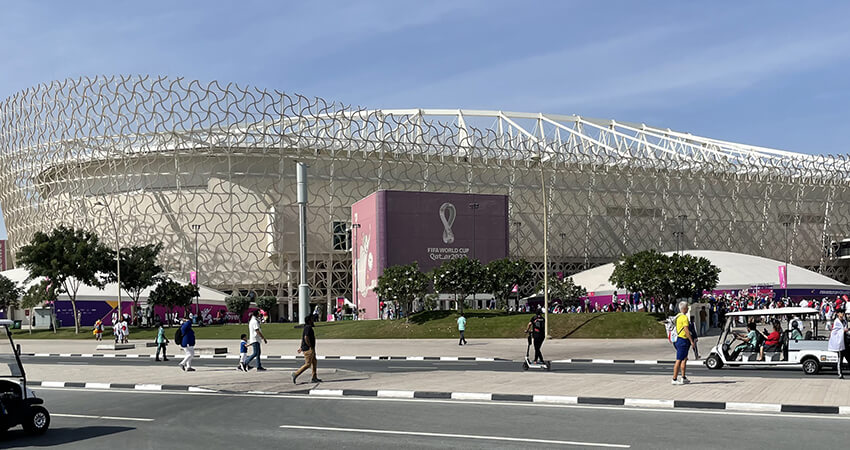Sustainability has become an increasingly urgent concern in all industries. The sports sector, particularly high-profile events like the FIFA World Cup and the Euro, is not exempt from this reality. Their communicational significance and the millions of people who follow these events make them particularly visible in addressing sustainability.
The concept of carbon neutrality has become a crucial consideration in these global tournaments, offering a way to mitigate the environmental impact associated with these colossal sporting celebrations. In this context, the transportation to the venues where these global or regional events take place can be one of the most significant factors of environmental impact.
The challenge of carbon neutrality
The magnitude of football tournaments poses a considerable challenge when aiming for carbon neutrality. These events typically involve a multitude of activities that contribute to creating carbon footprints.
To begin with, the construction and operation of stadiums, as well as all related infrastructure. But also, the travel of teams and fans is more than significant, especially when there are large transfers. For example, it is estimated that the 2018 FIFA World Cup in Russia generated around 2.16 million tons of CO2 emissions.
Qatar 2022, the carbon-neutral World Cup… that wasn’t

FIFA and the organizers of the 2022 Qatar World Cup promised carbon neutrality. They indicated that, through different strategies, they intended to achieve this. However, the implementation of sustainable constructions was not sufficient. In fact, it is calculated that it generated 50% more than the competition that took place in Russia.
An important factor has been aviation. The long distances traveled by teams and fans to reach the emirate generated a large amount of pollution. Despite the compensation practices created by the organizers, this was not enough. So, how can aviation help?
Challenges of 2030 and 2032
The FIFA World Cup in 2030 will be hosted by a total of six countries. Although, strictly speaking, three will be main hosts, and the other three will only host one match. We are referring to Spain, Portugal, and Morocco, and the South Americans Argentina, Uruguay, and Paraguay.
This means that those traveling to different matches will do so in many cases by plane. In fact, the alternative of private cars can be harmful to the environment. Therefore, it will be crucial, on the one hand, to reduce the impact of these flights (choosing the planes to be used wisely, for example), and on the other hand, to use alternative means of transportation for some transfers, such as trains. The balance between different types of transportation will be key.
The use of biofuel
[https://evergreenaviation.com/blog/sustainable-aviation-fuel-opportunities-and-challenges-for-air-cargo/] is one of the aviation sector’s major bets to reduce its environmental impact, but airlines have many other strategies to improve efficiency. After all, the central point is that each kilogram or each passenger means lower emissions.
Attention will also need to be paid, in this same sense, to the 2032 Euro, which will be played in Italy and Turkey. Both countries are not contiguous, so the connection between them is via air. Charter flights, especially dedicated to transporting fans to a city where a match is played, may reduce flights with connections that worsen travel efficiency.
The commitment of all stakeholders
FIFA and the organizing countries are the main responsible for these initiatives, but they are far from being the only ones. Their work regarding the construction of infrastructure and the planning of the tournament itself is crucial, but that is not the only thing at play.
The participating teams also have a role. In principle, emphasis should be placed on choosing efficient flights, where the care of the environment is prioritized, not just comfort and quick transfer. Some of the big stars tend to fly on private jets, despite covering routes that commercial flights also serve.
The same goes for fans. Among the considerations for participating in these events, the impact they generate with their carbon footprint should also be considered. The generation of waste is an important point, but above all, the choice of efficient flights is crucial.
A sport without a carbon footprint
The goal of achieving carbon neutrality in such large-scale football events is not simple, but it is an imperative objective in the fight against climate change. Continuous commitment to sustainable practices and innovation in green technologies are essential elements for the FIFA World Cup, the Euro, and other renowned sports events to move towards carbon neutrality and set a standard for the global sports industry.










